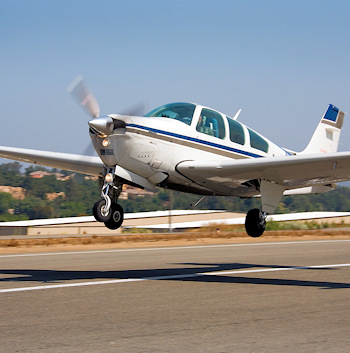Subscriber question:
"Observation: Pilots takeoff from many types of airstrips every day, yet few set a decision point where if they are not airborne by that point, they should abort the takeoff and still leave enough room to stop." - Fred R.
Wally:
 “Some general aviation pilots will tell you that you should have at least two-thirds of your liftoff speed when you reach the midpoint of the runway and if you don’t then you should abort the takeoff. This formula works if your only problem is simply getting off the ground, but that may not be your biggest problem. What about obstructions and rising terrain?
“Some general aviation pilots will tell you that you should have at least two-thirds of your liftoff speed when you reach the midpoint of the runway and if you don’t then you should abort the takeoff. This formula works if your only problem is simply getting off the ground, but that may not be your biggest problem. What about obstructions and rising terrain?
Here is how some other operators address this issue:
The airlines and many jet operators do not compute a point on the runway. Instead, they compute a speed at which the airplane can lose an engine and continue the takeoff or can abort the takeoff and stop on the remaining runway. This speed is called V1 or takeoff decision speed.
Military transport pilots also compute a V1 speed but in addition on some of the transports, they also measure acceleration versus time. For example, they start a clock at the beginning of the takeoff roll and expect to be at a certain airspeed by a certain period of time. If they have not achieved the speed by the allotted time, they abort the takeoff.
So it’s clear professional pilots consider takeoff abort options on every takeoff. But interestingly, they do not do it in relation to a point on the runway.
Most (Pilot’s) Operating Handbooks give us some guidance in this area, but they give distance for liftoff and perhaps distance to clear a fifty-foot obstacle. They say nothing about rising terrain. Then don’t forget the other thing we know about those numbers—they were made with a new airplane, a test pilot and a hard surface runway.
So how can they be of help to us? They can at least give us something to start with. If there are obstacles or rising terrain in your path, be very conservative in your judgment and leave plenty of margin. Some good advice I’ve heard from other pilots is to double those handbook numbers. If you don’t have that much margin, offload weight, wait for cooler weather or better winds.”
Here’s an eye-opening video that the Air Safety Institute recently published on takeoff performance calculations.
When required, how do you calculate takeoff distance for your airplane?
